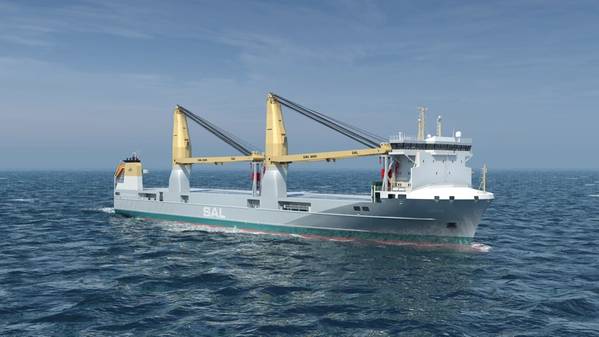
The new Orca Class heavy-lift vessels being built at China's Wuhu Shipyard for the Jumbo-SAL-Alliance will be propelled by SCHOTTEL ControllablePropellers (SCP).
The four-bladed controllable pitch propellers type SCP 129 will feature an input power of up to 8,810 kW and a propeller diameter of six meters.
Jumbo-SAL-Alliance is a commercial joint venture between German shipping company SAL Heavy Lift and Netherlands-based Jumbo Shipping. Their new Orca Class, which includes four firm and two optional vessels, has been designed and developed by SAL Engineering.
“The Orca Class is setting new standards in global heavy-lift shipping. They represent the new benchmark both in terms of their technical capabilities and modern climate-friendly propulsion systems,” said Dr. Martin Harren, owner and CEO of SAL Heavy Lift, SAL Engineering and the Harren Group. “The ships will be the most efficient vessels in their class, with consumption and emission figures far superior to any existing heavy-lift vessel today.”
The vessels will be equipped with dual-fuel engines and can be run on methanol as an alternative fuel. As soon as green methanol becomes available in key ports, the Jumbo-SAL-Alliance will be able to offer their customers carbon-neutral transport solutions. In addition to the optimized hull form, the innovative engine and propulsion concept including a booster function offers a hybrid setup with the widest available range of economic speed settings and redundancy, while also reaching a maximum vessel speed of about 18.5 knots.
In order to find the optimal propulsion set to reach these targets, the results of hydrodynamic calculations from three market competitors, including SCHOTTEL, were analyzed by a committee of the two independent model test facilities China Ship Scientific Research Center (CSSRC) and the Shanghai Ship and Shipping Research Institute (SSSRI).
The open water, self-propulsion and cavitation model tests were carried out and evaluated according to SAL’s pre-defined requirements, such as propeller efficiency, cavitation behavior and propeller-induced hull pressure pulses. They verified SCHOTTEL’s customized propeller design with an almost cavitation-free operation and an optimized open water curve meeting SAL’s requirements to their fullest satisfaction.
“We’ve worked well with SCHOTTEL for many years, but at the same time wanted to be sure to select the best propeller design for our newbuilding as well. Therefore, it was clear to objectively compare all different competing propeller designs,” said naval architect Florentin Edler, project engineer at SAL Engineering GmbH. “When it now came to equipping the Orca Class, SCHOTTEL’s hydrodynamic team once again had proven their expertise which was the key to them winning the contract.”
SCHOTTEL said its ControllablePropeller supports the elaborate green standard with a fully customized combination of propeller blades, propeller shaft, coupling, stern tube, hydraulics and sealing. The hydraulic and lubrication oil system is designed for the use of Environmentally Acceptable Lubricants (EALs). Considered a non-oil-to-water interface, the system complies with VGP regulations. In addition, the customer benefits from close cooperation between the propulsion expert and rudder manufacturer with a proposed solution to optimize the inflow, thus reducing the number of coordination paths.
According to the manufacturer, the SCP combines maximum thrust and maneuverability with the utmost reliability, low operating costs and user-friendly operation. Particularly suitable for vessels with different operation profiles, the SCP always provides optimum propulsion power for changing speeds or loads, SCHOTTEL said. In addition, the robust design keeps maintenance to a minimum and ensures a long service life.
Delivery of the four firm plus two optional SCPs for the Orca Class newbuilding series will start in summer of 2023 for the first vessel. The last shipment is scheduled for 2025. The first two units will be exclusively involved in the transportation of offshore wind farm components in a long-term commitment with Siemens Gamesa Renewable Energy. A holistic, sustainable approach including lowest achievable emission values was prerequisite for the award of the relevant contract.
The vessels measure 149.9 m x 27.2 m and provide a capacity of 14,600 dwt. Despite their compact outer dimensions, the vessels have a box-shaped single cargo hold with the largest dimensions in their class. Provided the hatch covers with a capacity of 10 t/m² are utilized for stowing super-heavy deck cargoes, such as 3,000 t cable carousels, the vessels can accommodate over-height cargo in the hold and sail with open hatch covers up to full scantling draft. The vessels will feature Ice class notation 1A, a Polar Code certification and the reduced design temperature of the hull and equipment allow the ships to safely operate in cold conditions as well.